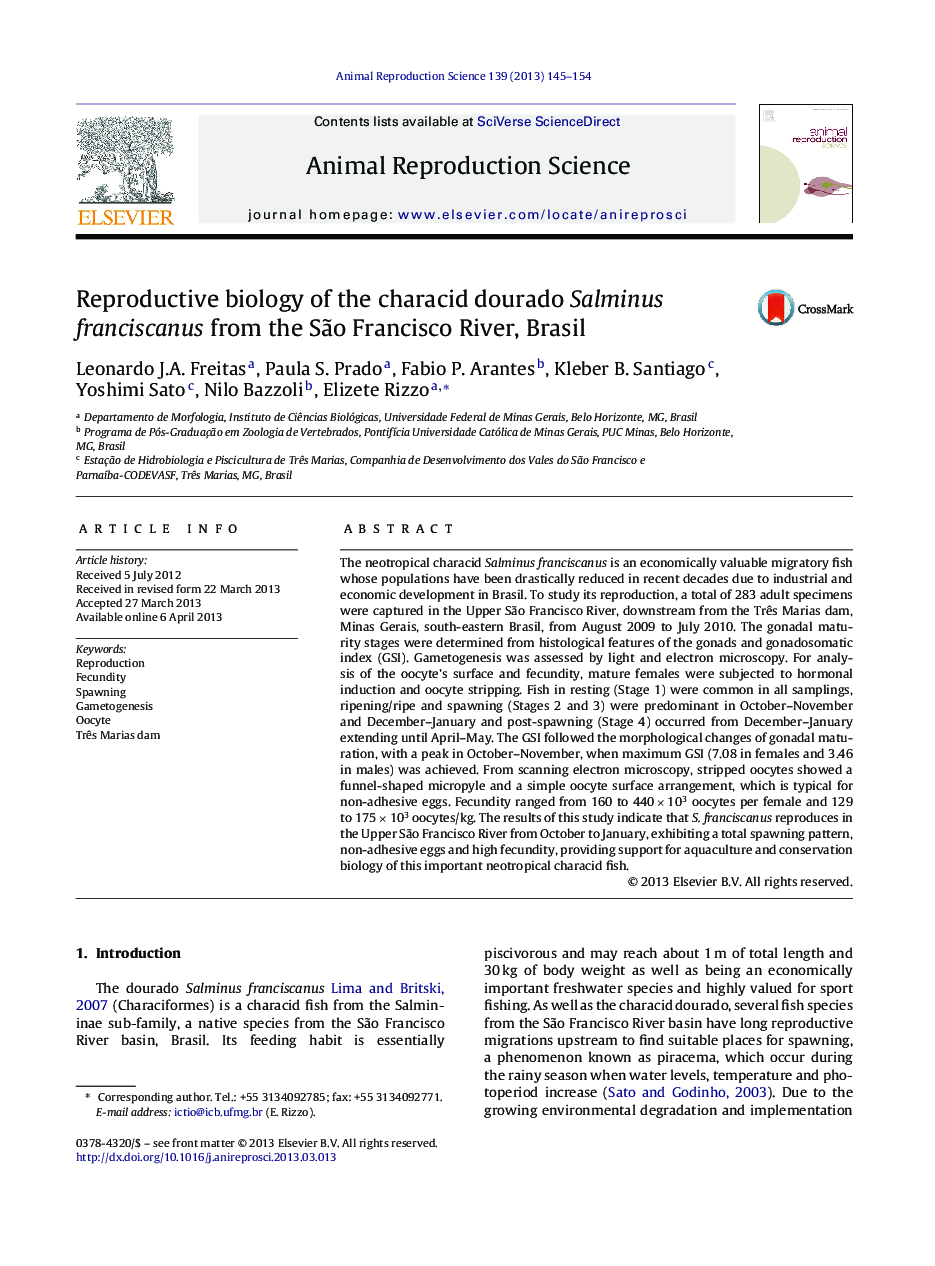| Article ID | Journal | Published Year | Pages | File Type |
|---|---|---|---|---|
| 2073045 | Animal Reproduction Science | 2013 | 10 Pages |
The neotropical characid Salminus franciscanus is an economically valuable migratory fish whose populations have been drastically reduced in recent decades due to industrial and economic development in Brasil. To study its reproduction, a total of 283 adult specimens were captured in the Upper São Francisco River, downstream from the Três Marias dam, Minas Gerais, south-eastern Brasil, from August 2009 to July 2010. The gonadal maturity stages were determined from histological features of the gonads and gonadosomatic index (GSI). Gametogenesis was assessed by light and electron microscopy. For analysis of the oocyte's surface and fecundity, mature females were subjected to hormonal induction and oocyte stripping. Fish in resting (Stage 1) were common in all samplings, ripening/ripe and spawning (Stages 2 and 3) were predominant in October–November and December–January and post-spawning (Stage 4) occurred from December–January extending until April–May. The GSI followed the morphological changes of gonadal maturation, with a peak in October–November, when maximum GSI (7.08 in females and 3.46 in males) was achieved. From scanning electron microscopy, stripped oocytes showed a funnel-shaped micropyle and a simple oocyte surface arrangement, which is typical for non-adhesive eggs. Fecundity ranged from 160 to 440 × 103 oocytes per female and 129 to 175 × 103 oocytes/kg. The results of this study indicate that S. franciscanus reproduces in the Upper São Francisco River from October to January, exhibiting a total spawning pattern, non-adhesive eggs and high fecundity, providing support for aquaculture and conservation biology of this important neotropical characid fish.
